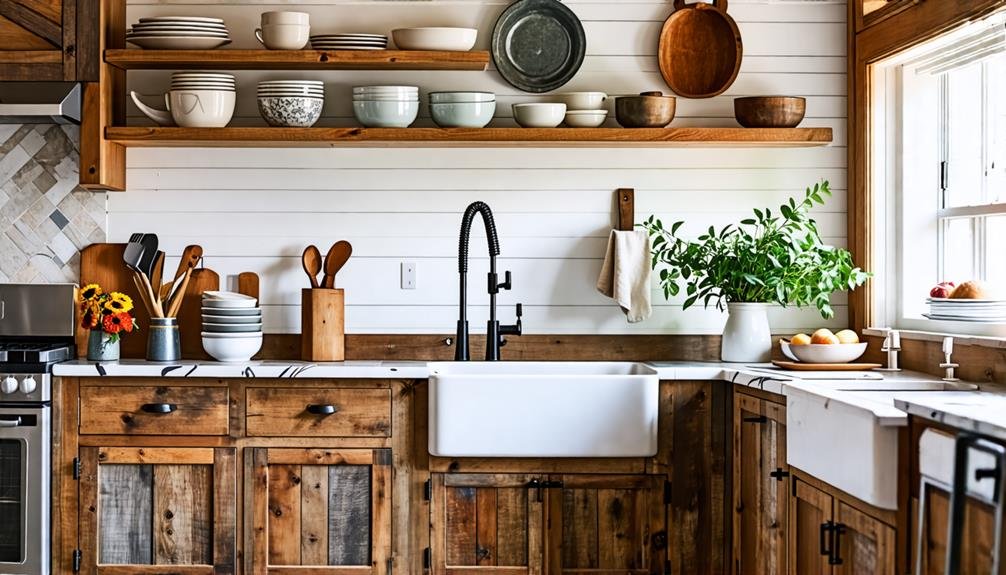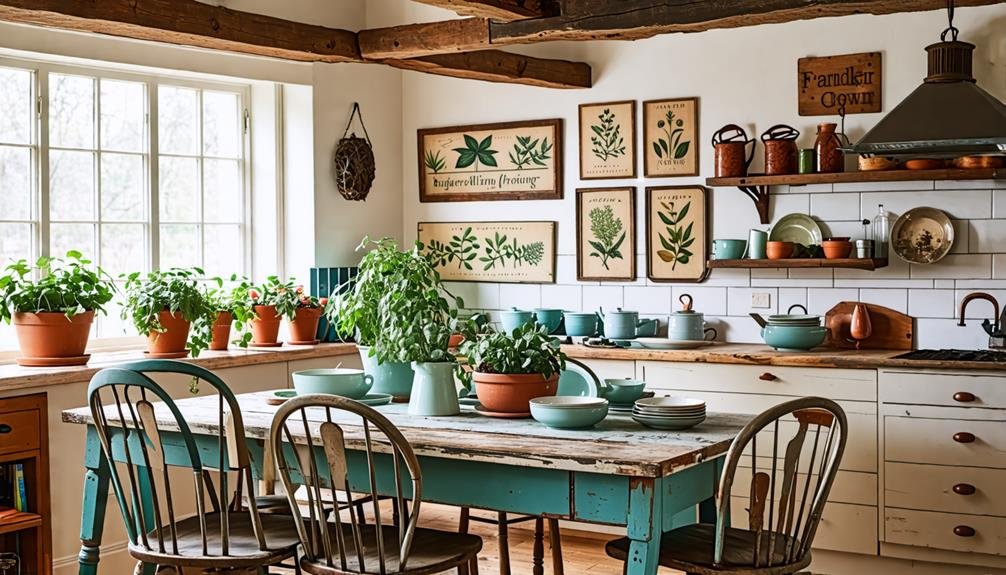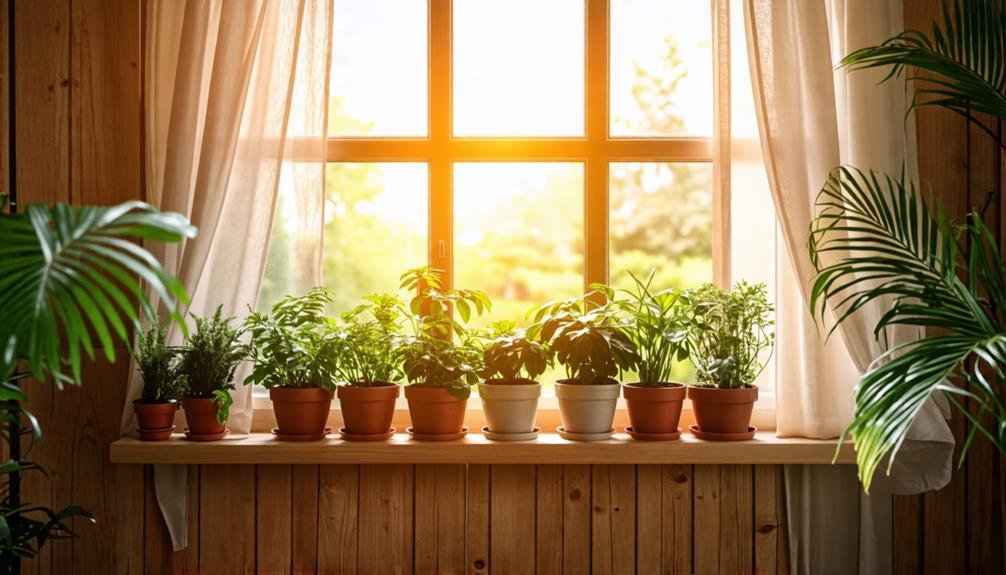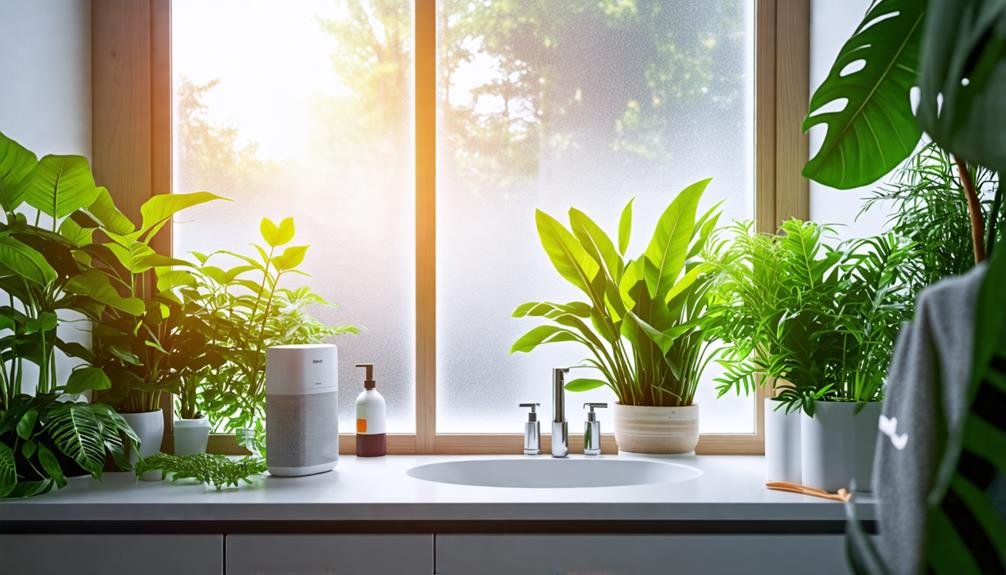Jonathan Knight from HGTV stresses the significance of integrating natural elements and modern design in rustic farmhouse kitchen renovations. Key strategies include using reclaimed wood and vintage accents while creating a cozy ambiance. A harmonious blend of old and new is crucial; for instance, pairing crisp white cabinetry with earthy tones and polished finishes. Functionality remains a priority—consider incorporating ample storage solutions and an open layout. Knight also suggests sourcing unique decor items from thrift shops and online marketplaces to enrich the aesthetic. With these tips, you can transform your kitchen into a welcoming, stylish space that reflects timeless design principles. Further insights await.
Evolution of Farmhouse Style
The evolution of farmhouse aesthetics showcases a vibrant interaction between rustic allure and modern design, adapting to shifting tastes while preserving its fundamental character. This aesthetic has progressed beyond its roots, blending traditional features with contemporary comforts to form environments that embody a timeless visual appeal. As homeowners aim to showcase their uniqueness, the farmhouse aesthetic embraces flexibility, permitting personal expression through updates.
Central aspects of renovation have become essential to this transformation, emphasizing natural materials, open layouts, and a welcoming ambiance. The palette of bright whites and earthy shades creates a serene environment, while diverse textures and fabrics add warmth and personality. Expansive windows invite sunlight, fostering an airy atmosphere that enhances both rustic and modern elements.
In modern versions, kitchens in farmhouse homes often spotlight notable features like exposed wooden beams, stylish pendant lights from brands like West Elm, and vintage touches that pay homage to history. This seamless integration of the old and new not only enriches the visual narrative but also meets the practical demands of contemporary living, ensuring that the evolution of farmhouse aesthetics flourishes in today's design environment.
Key Elements of Rustic Design
In rustic design, the selection of natural materials forms the foundation of the aesthetic, emphasizing authenticity and warmth. It is essential to strike a balance between old and new elements, ensuring that contemporary features harmonize with traditional craftsmanship. Moreover, a strong emphasis on functionality not only improves the practical use of the kitchen but also adds to the charm of the rustic farmhouse style.
Natural Material Selection
Selecting natural materials is essential for creating an authentic rustic kitchen design. These materials add warmth and texture, embodying the timeless charm of farmhouse aesthetics. The choice of materials significantly impacts the kitchen's ambiance and functionality. Using elements like reclaimed wood, granite countertops, and wrought iron accents enhances visual appeal while reinforcing the farmhouse style.
Reclaimed timber can be incorporated into cabinetry, flooring, or ceiling beams, offering a sense of history and character. Combining this with stone features, such as a quartz backsplash or a rugged granite countertop, adds depth and durability. Additionally, incorporating textiles like linen from Pottery Barn or cotton from IKEA for window treatments and upholstered furniture introduces a tactile element that complements the harder surfaces.
Natural hues, such as earthy browns from Sherwin-Williams, soft greens, and muted whites, enrich the rustic atmosphere. These selections create a harmonious palette that connects the kitchen to its natural surroundings, promoting a sense of tranquility. Ultimately, the thoughtful selection of natural materials is crucial for designing a rustic kitchen that is both welcoming and functional, reflecting the essence of farmhouse living.
Balancing Old and New
Achieving a harmonious balance between traditional and modern elements is essential for creating a rustic kitchen that feels both timeless and contemporary. Jonathan Knight, known for his expertise on HGTV, highlights the importance of blending vintage details with current conveniences to build a cohesive design. One effective strategy is to use natural materials, like reclaimed timber and stone, which evoke a sense of history while ensuring durability and visual appeal.
A color palette featuring crisp whites and earth tones can serve as a unifying backdrop, allowing both classic and modern features to coexist beautifully. For instance, pairing exposed wooden beams with sleek, contemporary pendant lighting creates a striking contrast that enhances overall visual interest. Additionally, integrating modern components like Carrara marble countertops alongside vintage fixtures, such as an apron-front sink, effectively bridges the gap between different eras.
Textures significantly contribute to this balance; combining rustic fabrics, such as linen or burlap, with polished finishes adds depth and warmth. By carefully selecting key components, one can create a kitchen that reflects both the charm of rustic design and the comforts of modern living, ultimately resulting in a space that feels inviting and functional.
Emphasis on Functionality
Functionality is essential in rustic kitchen design, ensuring the area exudes charm while fulfilling the practical needs of modern households. A thoughtfully crafted rustic kitchen merges usability with visual appeal, creating a sanctuary for culinary exploration. Key components that foster this synergy include generous storage options, effective work areas, and intelligent layouts that facilitate smooth movement.
Open shelving, like those from IKEA, allows homeowners to display rustic dishware while retaining easy access to essential items. A spacious kitchen island, perhaps from the Amish Country Collection, serves multiple functions: it becomes a preparation zone, a social hub, and offers extra storage. High-quality appliances, such as those from KitchenAid, can harmonize with the rustic theme, enhancing functionality without compromising style.
Natural materials, including reclaimed oak and granite, bring character and longevity to the space. Large windows invite sunlight, making the kitchen feel airy and welcoming. By prioritizing functionality in rustic kitchen design, homeowners can enjoy both the nostalgic allure of farmhouse aesthetics and the modern conveniences necessary for daily life. Ultimately, a well-designed rustic kitchen serves as both a retreat and a vibrant center of activity, catering to the demands of contemporary living.
Splurging Vs. Saving Strategies

When renovating a rustic farmhouse kitchen, it's crucial to identify where to invest and where to cut costs, as this choice influences both the appearance and expenses of the project. Investing in durable flooring, cabinetry, and countertops typically provides excellent returns in longevity and design. For instance, opting for high-end materials like Maple hardwood flooring or Cambria quartz countertops can enhance the kitchen's overall look and usability, making these areas worthy of a splurge.
On the other hand, there are numerous ways to economize without compromising on style. Exploring second-hand shops, flea markets, and online marketplaces can uncover distinctive rustic furnishings and lighting fixtures at lower prices. Incorporating vintage lighting from brands like West Elm or reclaimed wood elements can add personality to the kitchen, helping homeowners preserve the farmhouse aesthetic while sticking to a budget.
Timeless Aesthetic Appeal
The timeless aesthetic appeal of farmhouse kitchens is characterized by classic design elements that create warm and inviting spaces. By integrating natural materials, earthy tones, and vintage accents with modern conveniences, these kitchens exude a sense of comfort and style that transcends trends. This harmonious blend not only elevates the visual appeal but also fosters a functional environment suited for contemporary living.
Classic Design Elements
Farmhouse kitchens embody a timeless aesthetic that radiates warmth and comfort while incorporating modern conveniences. A well-designed farmhouse kitchen merges rustic charm with contemporary functionality, resulting in inviting and practical spaces. Essential design features include natural materials like reclaimed wood, granite, and wrought iron, which enhance texture and depth.
Crisp whites and earthy hues such as taupe and sage dominate the color scheme, offering a neutral canvas for personal touches through decor and textiles. Large multi-pane windows, often from Pella, flood the space with natural light, creating an airy atmosphere and connecting the interior to the picturesque landscape outside. Vintage elements like apron-front sinks from Kohler and open shelving systems add to the authentic rustic vibe while providing practical storage solutions.
Integrating modern appliances from brands like Samsung and sleek LED lighting fixtures ensures that the kitchen remains efficient and user-friendly. This combination of classic and contemporary not only honors the farmhouse's historical essence but also meets the needs of today's households. Ultimately, the classic design elements achieve a balanced ambiance that celebrates both tradition and modernity, allowing homeowners to relish a stylish and cozy environment.
Warm, Inviting Spaces
Creating inviting, cozy environments in farmhouse kitchens merges rustic charm with modern conveniences that foster functionality and a homely feel. This enduring aesthetic is marked by the use of organic materials, like oak and granite, combined with sleek finishes that enhance comfort and usability.
To cultivate this friendly atmosphere, consider adding large multi-pane windows that allow abundant sunlight, contributing to a light-filled space. Choose a color scheme that blends bright whites with natural earth tones, complemented by textured fabrics such as jute rugs and linen curtains. Incorporating vintage touches, like a Kohler farmhouse sink or reclaimed wood shelving, infuses character while honoring the kitchen's history.
For layout, emphasize open areas that facilitate movement and socializing, ensuring that family and friends can gather easily. Highlight features such as a reclaimed wood island or exposed timber beams, which can harmonize with contemporary appliances from brands like Samsung or Bosch, enhancing both aesthetics and practicality. By thoughtfully selecting these components, you can craft a farmhouse kitchen that serves as a welcoming center for everyday life, reflecting both heritage and modern ease.
Standout Features in Renovation

Jonathan Knight's farmhouse kitchen renovation features striking contrasts. The blend of modern materials and rustic elements creates a unique aesthetic. The sleek Carrara marble countertops pair beautifully with a handcrafted oak island. This combination enhances both visual appeal and kitchen functionality.
Key elements of this renovation include:
- Exposed Timber Beams: These structural components add rustic charm, fostering an inviting atmosphere and complementing the modern design.
- Large Multi-Pane Windows: These expansive glass fixtures flood the space with natural light, seamlessly connecting indoor and outdoor areas, and creating an open feel.
- Vintage Touches: Items such as a Kohler farmhouse sink and a pottery rack infuse character and nostalgia, linking contemporary finishes with a rich historical background.
Blending Old and New
The successful integration of vintage and modern elements in Jonathan Knight's kitchen makeover showcases how contemporary aesthetics can seamlessly blend with rustic charm. This method enhances visual appeal and fosters a practical area that caters to today's lifestyles. Central to this unification is the selection of natural materials alongside contemporary features. For example, reclaimed wood beams infuse warmth and character, while polished modern pendant fixtures offer a chic, stylish contrast.
In Knight's transformation, the pairing of a rustic wooden island with gleaming white marble countertops exemplifies this harmony effectively. Deep navy custom cabinetry complements vintage details, such as a classic farmhouse sink from Kohler, skillfully connecting the historical and the contemporary. Expansive, multi-pane windows invite ample sunlight, enhancing the overall atmosphere and emphasizing the kitchen's relationship with the outdoors.
To replicate this effect, homeowners can choose components that embody both styles. Including various textures and textiles can enrich the design, ensuring that all elements contribute to a unified aesthetic. Ultimately, this fusion creates a kitchen space that is not only welcoming but also perfectly tailored for modern living.
Essential Color Schemes

Incorporating a well-considered color scheme is essential for achieving the desired blend of rustic charm and modern elegance in a farmhouse kitchen design. A thoughtfully selected palette not only enhances the aesthetic but also fosters a cohesive atmosphere that invites comfort and functionality. Here are three key color schemes to consider:
- Crisp Whites and Soft Grays: This combination reflects light and creates an airy ambiance, making the kitchen appear more spacious. Utilize Shaker-style white cabinetry paired with gray accents in textiles or decor to maintain equilibrium.
- Earthy Tones: Shades like sage green, warm browns, and terracotta evoke a natural atmosphere reminiscent of the outdoors. These colors can be integrated through painted cabinets, wall treatments, or decorative accents, such as pottery from local artisans.
- Bold Accents: Incorporate deep navy or charcoal as a striking statement against lighter backgrounds. This approach allows for a contemporary twist while still respecting traditional farmhouse elements, such as a farmhouse sink or reclaimed wood shelving.
Ultimately, selecting a color scheme that resonates with individual taste while fostering a warm, inviting atmosphere is key to a successful farmhouse kitchen renovation. Such choices can seamlessly blend classic and contemporary styles, enriching the overall design.
Functional Layout Considerations
A functional kitchen design is essential for enhancing efficiency and creating a seamless transition between cooking, dining, and entertaining spaces. To optimize this, focus on the kitchen work triangle, which strategically positions the sink, stove, and refrigerator to reduce unnecessary movement and improve the cooking experience.
Incorporating an island, such as those from IKEA or Home Depot, can enhance functionality by offering extra counter space and serving as a gathering point for social interactions. Ensure there is sufficient room for movement around the island and between appliances to maintain a fluid workflow. Open floor plans, like those often seen in modern apartments, foster a sense of openness, encouraging interaction among family and friends while preparing meals.
Additionally, thoughtful storage solutions are vital. Brands like California Closets and ClosetMaid offer custom cabinetry, pull-out shelves, and open shelving options that keep essential items easily accessible while maintaining an organized environment.
Sourcing Unique Decor Items

Sourcing unique decor items can significantly elevate the ambiance and allure of a rustic farmhouse kitchen, seamlessly blending traditional aesthetics with contemporary functionality. To achieve this, consider exploring various avenues for obtaining distinctive pieces that align with your design vision.
- Thrift Shops: These treasure troves often contain vintage gems that can infuse authenticity and warmth into your kitchen. Seek out items such as ceramic tableware, antique kitchenware, or reclaimed furniture that embody the essence of farmhouse style.
- Flea Markets: Regular excursions to local flea markets can uncover unique decorative items and furnishings. Interacting with vendors offers opportunities to discover one-of-a-kind treasures, from artisanal pottery to repurposed timber accents, each with its own narrative.
- Online Marketplaces: Platforms like Etsy and Facebook Marketplace serve as hubs for artisans and sellers to showcase their creations. Here, you can find custom-made products that marry personal style with rustic charm, such as handcrafted signs or tailored kitchen accessories.



















You must be logged in to post a comment Login